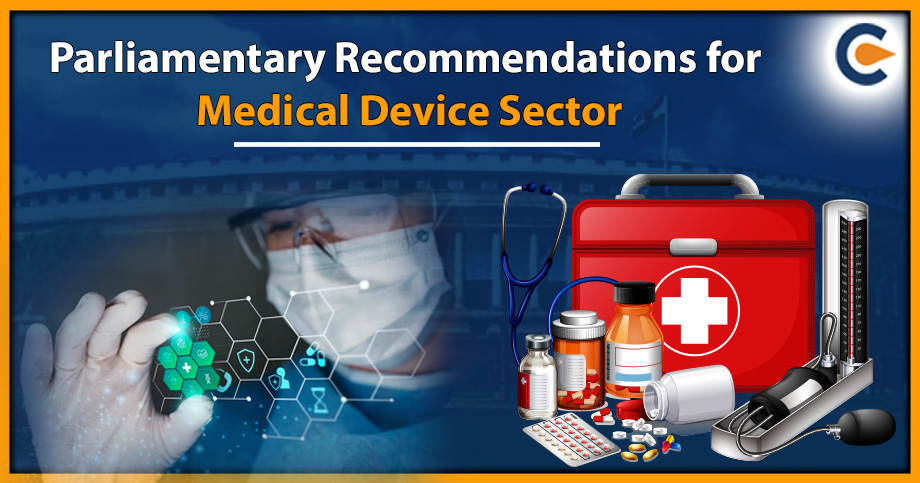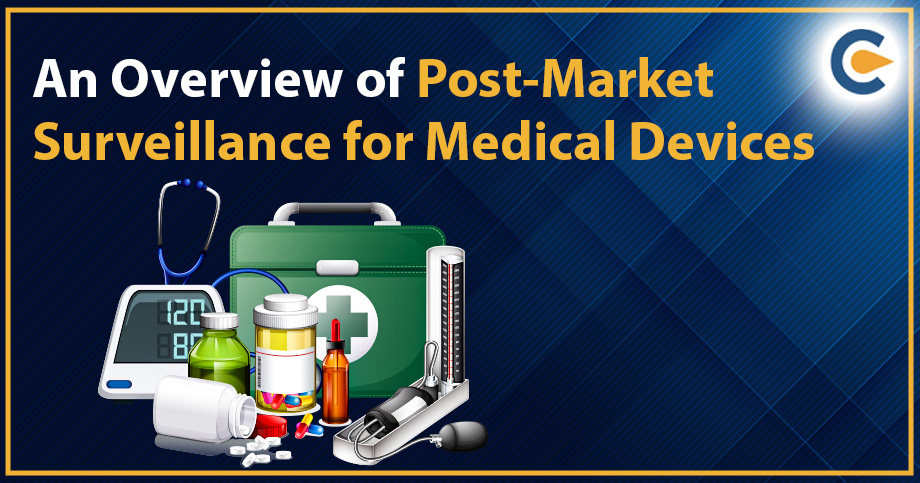A new group of regulators at various levels should be established, according to the Parliamentary Standing Committee on Health and Family Welfare, to oversee the medical device sector. The Standing Committee stated that this action would substantially assist the manufacturers and minimize the time required to launch a production unit, hence improving ease of doing business, in its one hundred thirty-eighth (138th) report on the medical devices: Regulation and Control. In this article, we will discuss some parliamentary recommendations for Medical Device Sector.
Medical devices and IVDs are regulated by the Drug Controller General of India (DCGI) within the Central Drugs Standard Control Organization (CDSCO), part of the Ministry of Health and Family Welfare. Manufacturers of specific medical devices must adhere to Indian medical device rules in order to market their products in India. With the release of the Medical Device Rules in 2017, Indian authorities completely revised the regulatory framework for medical devices. Devices are governed by the Central Drugs Standard Control Organization (CDSCO), a division of the Ministry of Health and Family Welfare, under the laws that went into effect in January 2018.
Regulatory Authorities – Medical Device Sector
In the current times, in India predominantly the following regulatory authorities have control and jurisdiction over medical devices in India: –
- The Central Drugs Standard Control Organization (CDSCO)[1]
- State Drug Licensing Authorities (also referred to as the state licensing authorities or SLAs).
- National Pharmaceutical Pricing Authority (NPPA).
- Department of Pharmaceuticals (DoP)
Unlike the current structure, the proposed regulator should grant manufacturing licenses for all classes of medical devices, including Class A, B, C, and D. As distinct regulating techniques used by different States would be eliminated, this would assist in harmonizing the regulation process across the nation. It is estimated that India’s medical device sector is currently worth 11 billion dollars, and that country’s share of the worldwide medical device market is 1.5 percent. India ranks in the top 20 markets in the world and is the fourth-largest market in Asia for medical devices after Japan, China, and South Korea. It further suggested that all three pillars of the medical devices sector—Government, Business, and Academics, work collaboratively in order to achieve the aim of making India a USD 50 billion market by 2025.
Medical Device Sector – Parliamentary Recommendations
The industry has grown at a CAGR of 15% during the last three years. Imports supply over 80% (by value) of the needs of the domestic market. Costly medical gadgets are imported to meet the population’s demand because the majority of products created in India are disposables and consumables.
- The Committee therefore advises that the proposed regulator should be appropriately staffed with a workforce that is technically proficient and knowledgeable about how the medical devices sector operates in order to take on the regulation of all Classes of medical devices across the nation.
- According to the Standing Committee’s report, a “National Commission on Medical Devices” should be established to thoroughly analyze every area of the sector and a comprehensive law shall be drafted henceforth.
- The Committee further suggests that the Commission shall look into the possibility of centralizing medical device licensing under a single central agency to streamline the approval procedure.
- A 10-15 year roadmap with a distinct policy strategy and objectives must also be included in the blueprint for the new legislation.
- The standing committee believed that because the industry is expanding, the government should not continue to allow pharma experts to regulate medical devices. Instead, it is time for qualified and well-trained medical device officers to disperse medical device regulations locally in order to support the national medical device sector.
- According to the Committee, when establishing the benchmarks and criteria for medical equipment, “Health” should be given top priority in the standards that are created. In this regard, the Committee is of the opinion that BIS should prioritize aligning Indian standards with top-tier, internationally recognised quality standards. Indian medical device manufacturers in the international market would benefit from adapting Indian norms to meet international standards as it would increase their competitiveness and acceptability, which in turn would turn India into a net exporter of medical devices, spare parts, and services. Because complying with Indian standards is cheaper for local manufacturers than complying with international standards, the Committee advises BIS to upgrade Indian Standards to Corresponding Global Medical Device Standards on a timely basis.
- The Committee advised the Ministry of Health and Family Welfare to permit the new regulator to collaborate with organizations such as IISC, CSIR, DRDO, and a network of IITs to evaluate medical devices for efficacy and safety.
- The Committee also stated in its report that the BIS should concentrate on bringing Indian standards up to par with top-tier, internationally recognized standards of quality. Adopting international standards will improve Indian medical device manufacturers’ competitiveness and acceptability on the international market, turning India into a net exporter of medical devices, spare parts, and services.
- The Union Health Ministry should put additional emphasis on ensuring transparency by drafting this legislation so that people have a right to take part in the decision-making process, it was stated.
- It was also stated in the report that the focus should be on boosting manufacturing capacity with a simpler yet effective regulatory regime and a flexible taxation structure, the group advised, with the ultimate objective of being “self-reliant.”
- Additionally, the government has to prioritize and fund Research & Development at top technological institutes like the IITs, IIMs, AIIMS, NITs.. For the sector to have a skilled and certified workforce, skill development must also be prioritized.
- The committee stated that it believes local raw material and essential component availability is necessary for the growth of indigenous manufacturing and that the country’s 80% reliance on imports is mostly caused by a lack of advanced technology and a lack of readily accessible raw resources.
- The group advises the government to provide incentives to organizations, businesses, and manufacturing facilities that are involved in domestic production of raw materials and replacement parts.
- The committee further suggests that the PLI plan be expanded to include manufacture of components and raw materials so that India may serve as a global hub for raw materials.
- This action would considerably benefit manufacturers and shorten the time needed to open a factory, making doing business easier.
- The National List of Essential Medicines should ideally include “Scheduled Medical Devices” as a category for the equipment needed to provide patients with critical care.
- The Committee observes that numerous regulations from various departments and ministries are present at the component level. The Committee advises CDSCO, which runs a one window clearance platform for licensing applications for production, export, and import, to incorporate all these entities involved in the regulation of medical devices. A one window clearance for all departments and ministries would speed up the permission process from several departments and ministries while also considerably increasing investment in R&D for medical devices. The Ministry’s proposed new separate Act for the regulation of medical devices must include such a comprehensive “One window clearing/approval system”.
Conclusion
To undertake the regulation for all medical device classes throughout the country, the proposed regulator should be adequately staffed with workforce which is technically skilled & well-versed with the functioning of the medical devices industry.
Read Our Article: Medical Device Industry Analysis Report













